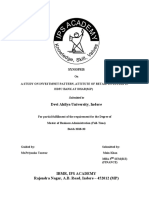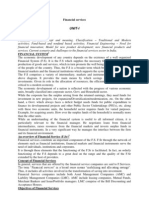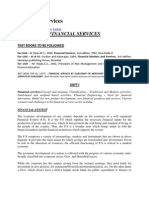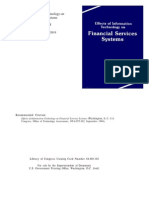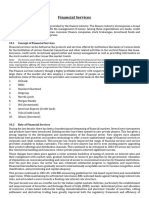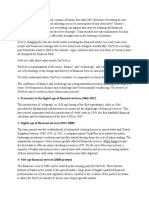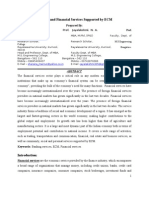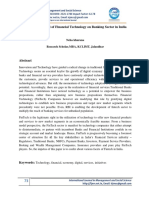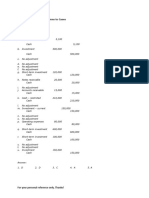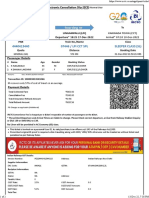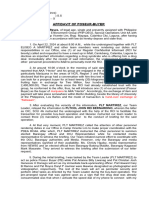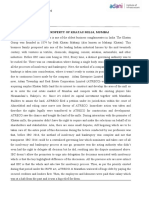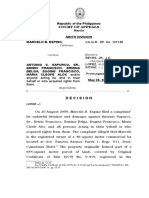0% found this document useful (0 votes)
95 views14 pagesChapter 1: INTRODUCTION
The document provides an overview of the financial services industry in India and key issues it faces. It discusses how the industry has evolved from separate sectors like banking and brokerages to converged financial conglomerates offering diverse products. Major problems discussed are cybercrime, regulatory compliance, use of big data, and disruption from fintech. It also covers challenges around talent retention, customer experience, and digital transformation. The document then provides details on the National Stock Exchange of India and its Nifty 50 index, which tracks the country's 50 largest companies.
Uploaded by
prajwal jainCopyright
© © All Rights Reserved
We take content rights seriously. If you suspect this is your content, claim it here.
Available Formats
Download as DOCX, PDF, TXT or read online on Scribd
0% found this document useful (0 votes)
95 views14 pagesChapter 1: INTRODUCTION
The document provides an overview of the financial services industry in India and key issues it faces. It discusses how the industry has evolved from separate sectors like banking and brokerages to converged financial conglomerates offering diverse products. Major problems discussed are cybercrime, regulatory compliance, use of big data, and disruption from fintech. It also covers challenges around talent retention, customer experience, and digital transformation. The document then provides details on the National Stock Exchange of India and its Nifty 50 index, which tracks the country's 50 largest companies.
Uploaded by
prajwal jainCopyright
© © All Rights Reserved
We take content rights seriously. If you suspect this is your content, claim it here.
Available Formats
Download as DOCX, PDF, TXT or read online on Scribd
/ 14









